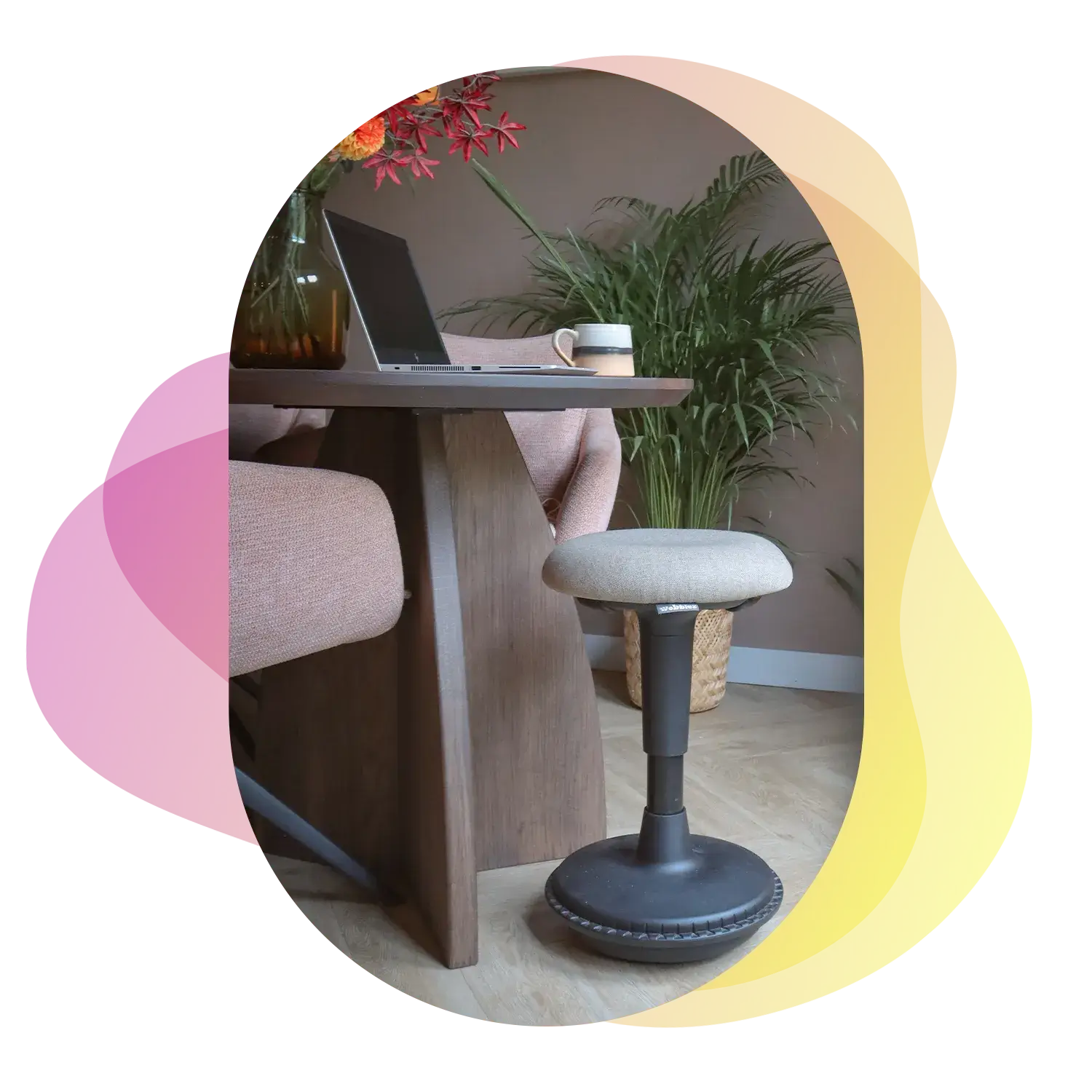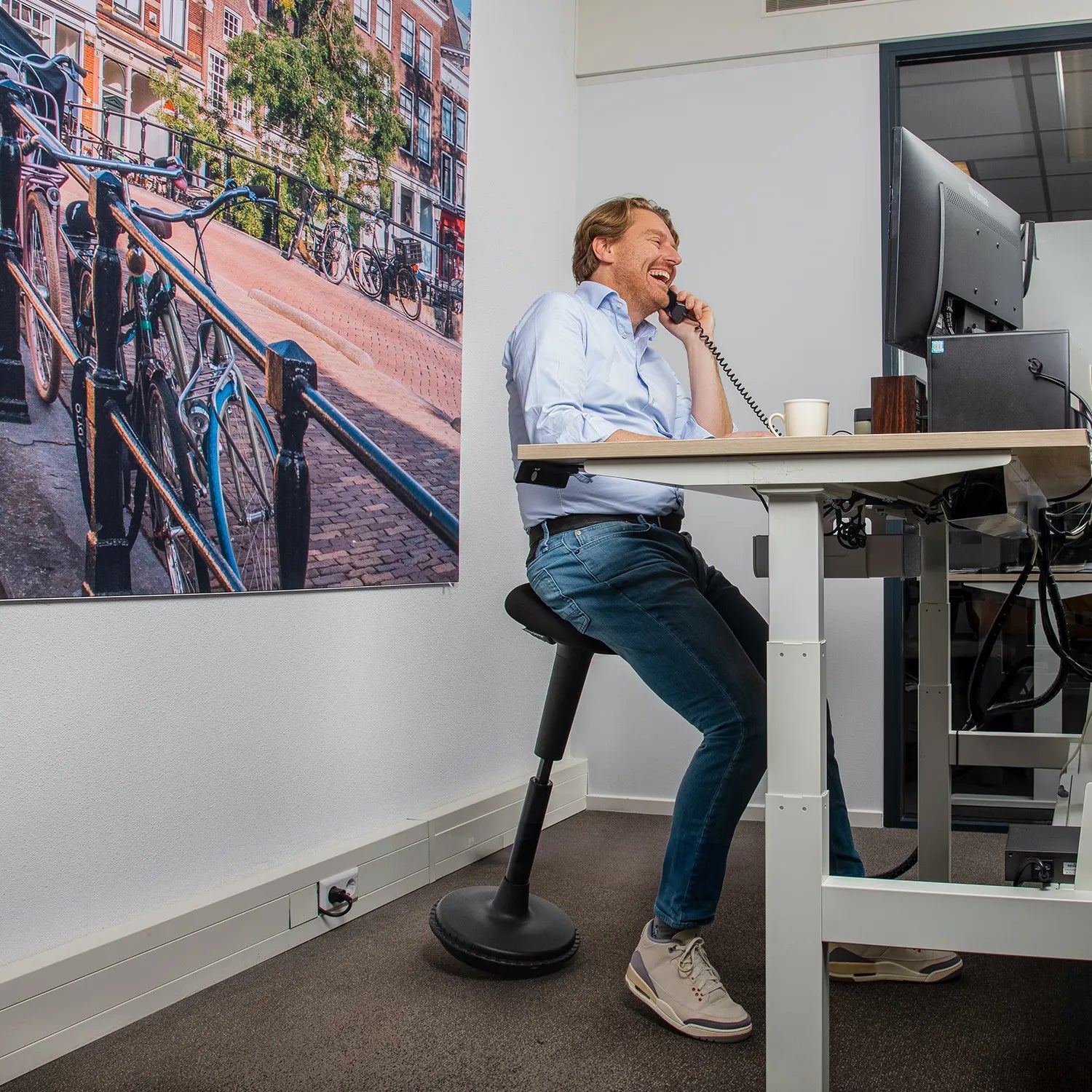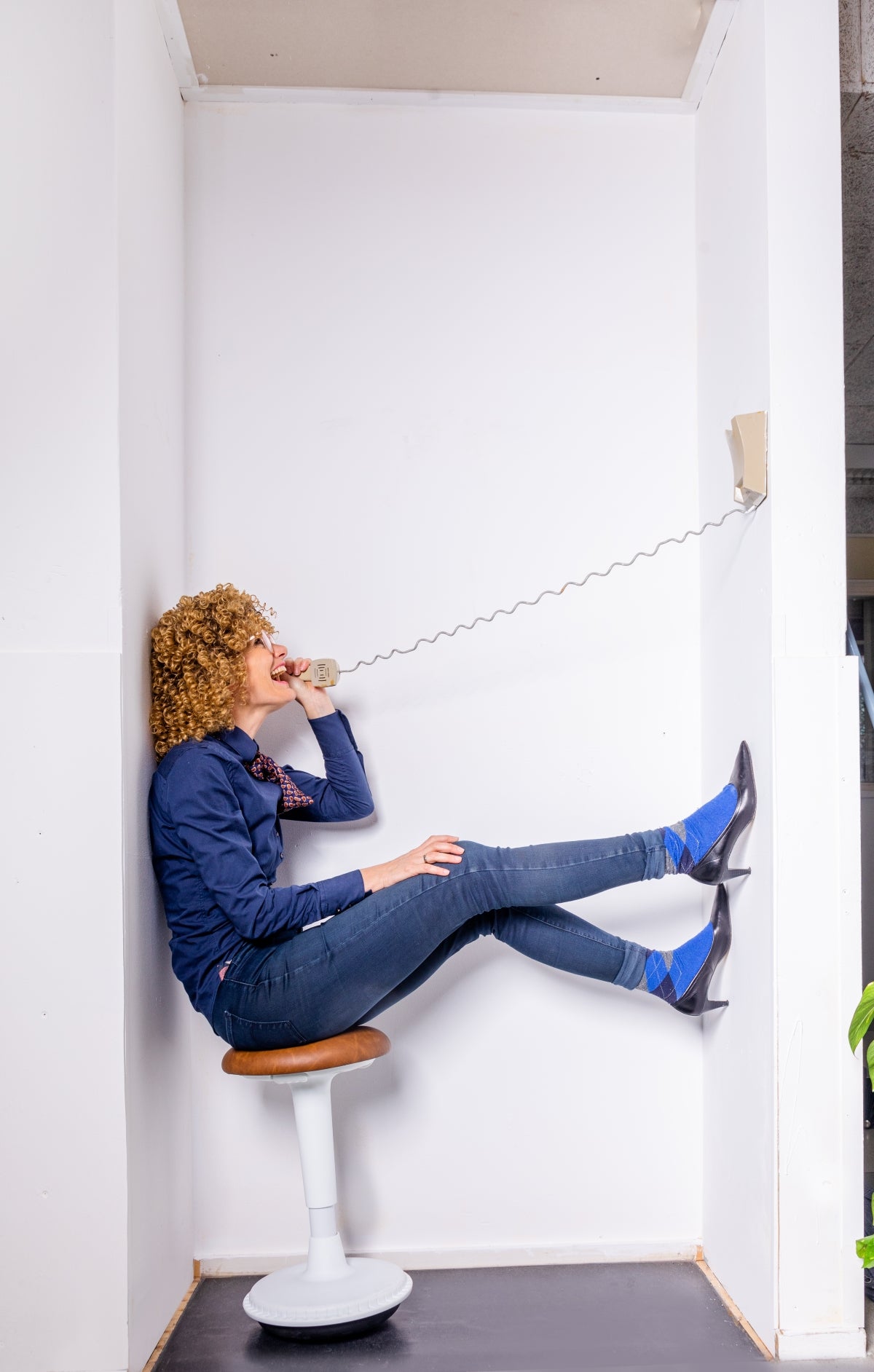It’s no surprise that many people spend their workday at a desk. But how often do you think about the correct sitting posture at your desk? A good ergonomic working posture can make a big difference to your health and productivity. In this blog post, we’ll guide you through the world of ergonomic sitting and provide tips on adopting a posture that keeps your body happy. Because, let’s be honest, who doesn’t want energy and comfort during the workday?
Why is an Ergonomic Working Posture Important?
Sitting still may sound comfortable, but without the right posture, it can put a significant strain on your body. Poor posture can lead to issues like back and neck pain, headaches, and fatigue. Sitting ergonomically at your desk means supporting your body naturally, so that your muscles and joints aren’t unnecessarily strained. So, how should you sit at your desk? We’ll explain!
The Correct Sitting Posture at Your Desk: Where to Begin?
Good sitting posture at your desk starts with awareness. How are you currently sitting at your desk? Is your back relaxed, or are you slouched over your keyboard? Let’s walk you through the basics of a good ergonomic sitting posture.
Keep Your Feet Firmly on the Ground
Ensure that your feet are flat on the ground. This helps to keep your body balanced and prevents you from slouching unconsciously. If your feet don’t reach the ground, use a footrest. It may seem like a small detail, but a solid foundation begins with your feet.
The Correct Seat Height
How should you sit at your desk? You want your knees to form an angle of about 90 degrees without your legs being pinched. This promotes circulation and prevents that numb feeling in your legs after a long day of sitting. So, make sure your chair is adjustable—no more excuses for a seat that’s too high or too low.
Keep Your Back Straight
Good sitting posture at your desk starts with your back. Your back should be straight and supported. Use the backrest of your chair, and make sure your lower back is well-supported. Avoid slouching, as this can lead to back pain. Do you feel tension in your shoulders or neck? Then it’s time to adjust your posture.
Position Your Screen at Eye Level
There’s nothing worse than staring down at a screen that’s too low for hours. Your screen should be at eye level so that you can look straight ahead. This prevents neck strain and helps you maintain a natural posture. Use a monitor stand or stack books to bring your screen to the right height.
Ergonomic Sitting: An Active Posture
Ergonomic sitting at your desk is not just about adopting the correct posture and holding it all day. It’s also about staying in motion. Yes, you read that right: you can stay active even while sitting. Try to change your posture regularly and take short breaks to stand up and move.
Have you heard of a wobble stool? This innovative tool keeps you active while sitting. It encourages your body to make subtle movements, which activates your muscles and keeps you more energetic throughout the day. You’ll notice you become less stiff and can maintain focus better.
Practical Tips for a Good Working Posture
Now that you know the basics of a good sitting posture at your desk, here are a few more tips to ergonomically set up your workspace:
Adjust Your Chair Properly
Many people make the mistake of not adjusting their office chair correctly. Make sure that the height, backrest, and armrests of your chair are adjustable. Adjust your chair so that you sit comfortably and your body is well-supported.
Use an Ergonomic Mouse and Keyboard
An ergonomic working posture isn’t just about the chair. Consider using an ergonomic mouse and keyboard that keep your wrists in a natural position. This prevents joint strain and reduces the risk of issues like RSI (Repetitive Strain Injury).
Keep Your Workspace Organized
A cluttered workspace can be distracting and cause stress. Keep your desk tidy so that everything is within reach. This prevents you from reaching in uncomfortable positions and contributes to a calm work environment.
Set a Timer to Move
Even if you have the perfect ergonomic posture, sitting for extended periods is not good for your body. Set a timer to remind yourself to stand up and move every hour. A few minutes of stretching can work wonders for your energy and focus.
How to Apply Ergonomic Sitting?
We all tend to slump or unconsciously adopt an incorrect posture while working. The trick is to stay mindful of this and regularly check your sitting posture. Perhaps you can put a note by your desk with the main points to remember for a good working posture. This will make it easier to sit more consciously.
Conclusion: A Healthy Sitting Posture is Priceless
A good ergonomic working posture is essential for your health and well-being. By adopting the correct sitting posture and staying in motion, you can prevent complaints and work more comfortably. It’s all about balance: ensure support, keep your body moving, and remain alert to your posture.
With these tips, you’ll be sitting like a pro at your desk. Whether you have an office job or spend a lot of time behind your computer, your body will thank you for the extra attention. So, how are you sitting at your desk today? Time to check and take your working posture to the next level!
Join the Joyful Movement and say goodbye to back pain!






